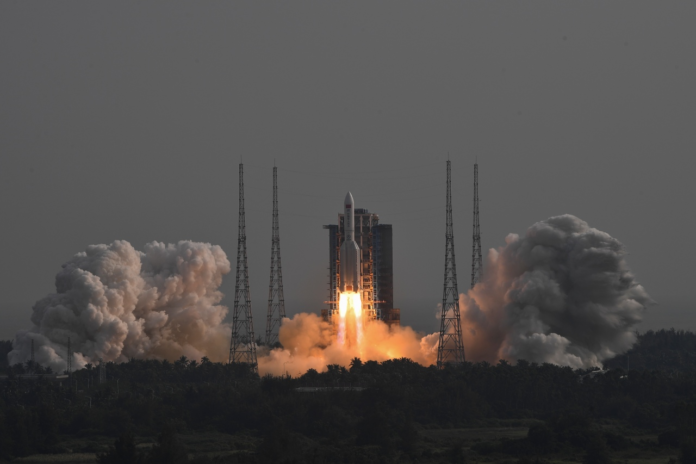TAMPA, Fla. (WFLA) — A massive, 23-ton hunk of Chinese space junk orbiting Earth is expected to make a chaotic return to Earth on Friday, but it’s unknown exactly when or where it will come down.
According to a report from space.com, the space junk in question comes from the core stage of a Long March 5B rocket, which reached orbit around Earth on Monday to deliver the final module for China’s Tiangong space station.
While the core stage has been orbiting for the past few days, atmospheric drag has been pulling the rocket body back to Earth little by little.
The media outlet said models and observations suggest the rocket body will make its final return Friday morning, but the possible time stretches across several hours.
The Aerospace Corporation, which supports national security space programs, said in its latest prediction that the rocket body could make an atmospheric reentry Friday around 7:20 a.m. EDT, plus or minus three hours.
With a cone of uncertainty that large, parts of North America, nearly all of Central America, and most of Africa are in the potential line of fire for space debris impact.
However, “it is still too early to determine a meaningful debris footprint,” the corporation added.
While there is no need for panic, considering much of the rocket body will likely burn up upon reentry, it is possible some sturdier pieces could survive the fall back to the ground, posing a risk to people and infrastructures in its way.
It’s not the first time a piece of man-made falling debris has posed a threat to the planet. It’s not even the first time a Chinese rocket part has come crashing down. Core stages from all three Long March 5B launches have fallen back to Earth in an uncontrolled manner, most recently in July, after the rocket transported the Wentian module to Tiangong.
While other private space companies or agencies designed their orbital rockets to return into the ocean or over unpopulated land, or, in the case of SpaceX, autonomously to land for future reuse, the Long March 5B core stage reaches orbit and has no way to steer itself down, so it uses atmospheric drag to chaotically do the work.



